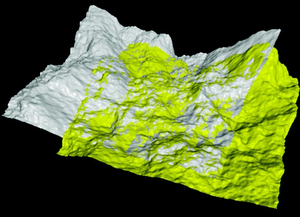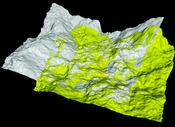Information
- Publication Type: Master Thesis
- Workgroup(s)/Project(s):
- Date: January 2019
- Date (Start): 1. June 2014
- Date (End): 8. January 2019
- TU Wien Library:
- First Supervisor: Stefan Ohrhallinger
- Keywords: registration, point clouds, shape retrieval
Abstract
Objects are scanned in 3D by taking overlapping depth images from different perspectives, which then must be registered together to reconstruct the mesh.Most current work detects a few corresponding points by features in order to find the transform which correctly positions the depth images to each other in 3D. Due to its nature of extracting and matching only a few data, it may not select the best global correspondence, especially if there are several close matches.
It is also difficult to detect complete failure, since the quality of the guess is not measured, so often manual intervention is necessary. Usually there are multiple depth images and several serial pair-wise registrations, so any errors in the determined transform propagate.
Therefore a better approach to reconsider that problem to use all of the available data and determine only overlaps within an error threshold, e.g. based on confidence from the scanner noise model. This also has applications in shape retrieval, for high-quality partial shape matching. A simplified version of that problem would be to find an overlap of two functions in 2D with the difference in their y-value thresholded in some measure
Additional Files and Images
Weblinks
No further information available.BibTeX
@mastersthesis{laager_florian-2014-daa,
title = "Robust Registration of Range Images",
author = "Florian Laager",
year = "2019",
abstract = "Objects are scanned in 3D by taking overlapping depth images
from different perspectives, which then must be registered
together to reconstruct the mesh. Most current work detects
a few corresponding points by features in order to find the
transform which correctly positions the depth images to each
other in 3D. Due to its nature of extracting and matching
only a few data, it may not select the best global
correspondence, especially if there are several close
matches. It is also difficult to detect complete failure,
since the quality of the guess is not measured, so often
manual intervention is necessary. Usually there are multiple
depth images and several serial pair-wise registrations, so
any errors in the determined transform propagate. Therefore
a better approach to reconsider that problem to use all of
the available data and determine only overlaps within an
error threshold, e.g. based on confidence from the scanner
noise model. This also has applications in shape retrieval,
for high-quality partial shape matching. A simplified
version of that problem would be to find an overlap of two
functions in 2D with the difference in their y-value
thresholded in some measure",
month = jan,
address = "Favoritenstrasse 9-11/E193-02, A-1040 Vienna, Austria",
school = "Research Unit of Computer Graphics, Institute of Visual
Computing and Human-Centered Technology, Faculty of
Informatics, TU Wien",
keywords = "registration, point clouds, shape retrieval",
URL = "https://www.cg.tuwien.ac.at/research/publications/2019/laager_florian-2014-daa/",
}

 image
image thesis
thesis

